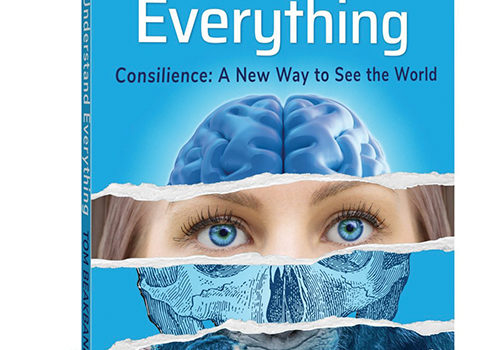 By Richard Boire
By Richard Boire
Customer service is certainly one phrase that generates strong varied emotions. Increased automation and technology have attempted to increase customer service levels while at the same time enhancing the cost efficiencies of companies. No doubt that companies are reaping the benefits but are customers really experiencing increased levels of customer service. Endless menu options and mind-numbing instructions from a chatbot await the customer who dares to call the company regarding some issue. The virtue of patience is the really the key to a happy customer in today’s environment.
Recognizing the virtue of patience which all of us exhibit to some degree, one can argue that this is something which should not have to be demonstrated by customers in a truly positive customer experience environment. But what is customer experience. In previous years, most marketers used the term CRM (Customer Relationship Management). But with the explosion of digital data, this term has now morphed into the more common vernacular term of customer experience. In fact, this term of “customer experience” is better suited to today’s environment where technology and an abundance of data can not only help the customer’s engagement with the company of the customer but also the ability to do it in real time.
Of course, the capability of doing this well relies on analytics and specifically advanced analytics. Algorithms working in the background can produce detailed information about that customer that allows the CSR rep to offer the right product or service to the right person at the right time. For example, a customer may call up a given company regarding some issue which may be as simple as a request for information to the more challenging issues of customer complaints. The rep, of course, would first address the issue at hand and then with the output of predictive models and other tools, be more proactive in describing products and/or services that are relevant to the customer. For example, the information on the CSR screen might indicate that I am a high-risk customer but also one who is high value. Various marketing options would be offered to this customer depending on the value and defection risk of the customer. But amidst all this information can we really say that customer defection should be the next best action or should the company be pursuing some other action.
For many organizations today, the issue is not one of an information deficit but rather one of information abundance. In this environment of abundance, the challenge becomes one of priority by being able to offer the right product or service for the consumer at that point in time. This can be very daunting given the many products and/or services of many organizations alongside all this information. So, what can organizations do?
Taking their cue from such organizations as Netflix or Amazon, recommender engines have been used by organizations particularly those with a large suite of products and/or services. Without delving too deeply into the math, the underlying concept is to explore the existing pattern of purchased products and services where the engine then offers the next suite of products/services to the customer. There are many options that are available to the data scientist. These options typically conduct the analytics at two levels with the first level being at the product/service level, often referred to as the item level. In a way, this option is conducting massive correlations between products or similarity between products. Several different options are readily available in python and include such options as Jaccard similarity or Cosine similarity. Of course, one can readily decide which option to use by observing a small list of products and services that are most similar to the current product and/or service.
The second level is at the customer level or user level where techniques like clustering identify distinct customer groups who would have similar purchase patterns regarding certain products and services. Some organizations may use a hybrid which is the combination of both the item-based and user-based solutions. In these cases, each item would have both a user-based and item-based score. By combining both scores together, the analyst can create a composite score and then rank each item or product based on that composite score.
Obviously, these types of tools make sense when there is a vast array of product/services such as retail. But what about scenarios when products and services are limited in scope. The use of predictive models can then be extremely useful by predicting broad courses of action. For instance, within a financial institution, these broad product/service areas might be as follows:
• Credit card
• Mortgage
• Line of Credit
• Loans
• Wealth/Investment
Predictive Models could be developed in two broad areas where the first activity represents the likelihood of purchasing that product or service while the second activity represents the likelihood of retaining that product or service. With model scores built for each activity, the bank could determine the next best likely outcome. The advantage of predictive models over recommender engines is that predictive models use historical information to mathematically predict a future outcome or event while recommender engines use historical information to impute a future outcome. There is no mathematical prediction with recommender engines. If predictive models are most robust in theory, then one might ask why we cannot use predictive models in the retail environment. Because of issues related to sparsity and cardinality, the use of recommender engines is better suited analytically to exclude sparse type products and to focus on those products which have enough purchase data.
With these tools readily available, the underlying challenge is how to deploy these solutions. As the focus always seem to be on automation, many organizations opt for chat boxes which use the information arising from these tools. Speaking as a customer now and not as a data scientist, I sense customers are experiencing fatigue with these automated menus and chat boxes. Would not a more optimum scenario be one where a human being is interacting with all this information and truly creating a more personalized type of experience. As a customer, I want to interact with another human who can quickly provide me with what I need as opposed to jumping through menus and screens. It is this complementation of information and the human interaction which will certainly mitigate the above-discussed issues of patience and in essence allow organizations to strive towards that elusive goal of optimal customer experience.
Richard Boire is the President of Boire Analytics in Pickering, Ontario and is one of Canada’s premier experts on data analytics.




